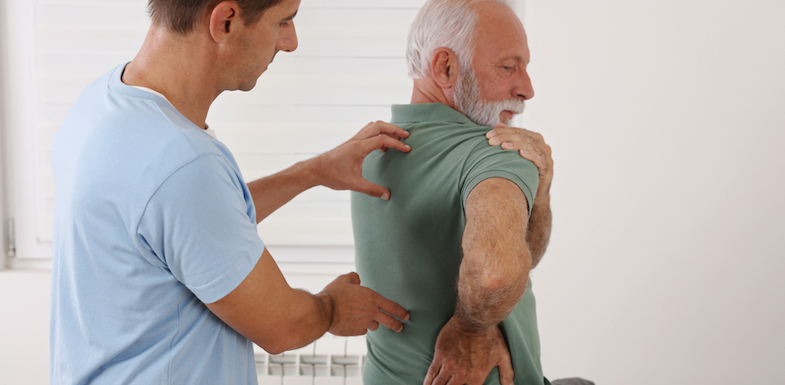The condition known as spinal stenosis is defined by a narrowing of the spinal canal, which causes the spinal cord and nerves to be compressed. Pain, numbness, weakness, and a reduction of motion are frequently the effects of this compression. Physical therapy for people with spinal stenosis is a specialist approach to treatment that aims to improve function, reduce symptoms, and improve the quality of life for those with this condition. Physical therapy is extremely important in addressing spinal stenosis because it combines targeted exercises, manual treatment, and education.
Knowing about Spinal Stenosis
The cervical spine in the neck and the lumbar spine in the lower back are two areas of the spine where spinal stenosis can develop. Herniated discs, bone spurs, thicker ligaments, and degenerative changes are a few reasons that might lead to the spinal canal being more restricted. The typical symptoms are brought on by pressure on the spinal cord and nerve roots when the spinal canal gets smaller. Visit here Aquatic Physical Therapy.
What Physical Therapy Does
Physical therapy is a non-surgical strategy that aims to improve general function, increase mobility, and reduce discomfort in people with spinal stenosis. A complete evaluation is conducted by a physical therapist with expertise in spinal disorders to identify the patient’s unique needs and create a personalized treatment plan.
Fitness Therapy
Physical therapy for spinal stenosis must include exercise therapy as a core component. Exercises are incorporated into the physical therapist’s program to strengthen the muscles that support the spine, increase flexibility, and improve endurance in general. These workouts could include low-impact aerobic exercises, moderate stretching, and core stability drills. Exercise treatment aids in stabilizing the spine and relieving symptoms by enhancing the surrounding muscles’ strength and flexibility.
Manual Treatment
In spinal stenosis physical treatment, manual therapy methods, including joint and soft tissue mobilization, are frequently employed. These methods aid in easing muscular tension, increasing joint mobility, and reducing pain. Manual treatment and exercise therapy are frequently combined to optimize the advantages of both methods.
Education in posture and body mechanics
Physical therapy for spinal stenosis must include good body mechanics and posture instruction. The physical therapist offers advice on maintaining excellent posture when doing daily activities, including sitting, standing, and lifting. Adopting ergonomic practices and improving poor posture can dramatically lessen stress on the spine and relieve symptoms.
Pain Control Techniques
Physical therapy for spinal stenosis must include pain management. To help with pain relief and inflammation reduction, physical therapists may use a variety of modalities, such as heat or cold therapy, electrical stimulation, or ultrasound. They also teach patients how to manage their symptoms independently, such as how to use cold or heat packs at home and move correctly to avoid aggravating symptoms.
Functional Education
Functional training focuses on enhancing the capacity to carry out daily tasks more easily and with less pain. With the patient’s cooperation, the physical therapist creates modifications or adaptations for difficult tasks or movements. Individuals with spinal stenosis can reclaim their independence and improve their general quality of life by improving their functional capacities.
In conclusion, Spinal Stenosis Physical Therapy provides a comprehensive strategy for treating the condition’s symptoms and enhancing the function of those who experience them. Physical therapists work to reduce pain, increase mobility, and improve patients’ quality of life by using exercise therapy, manual therapy, education, and pain management techniques. People with spinal stenosis can regain their functionality and participate in daily activities more easily and confidently by working closely with a physical therapist.


